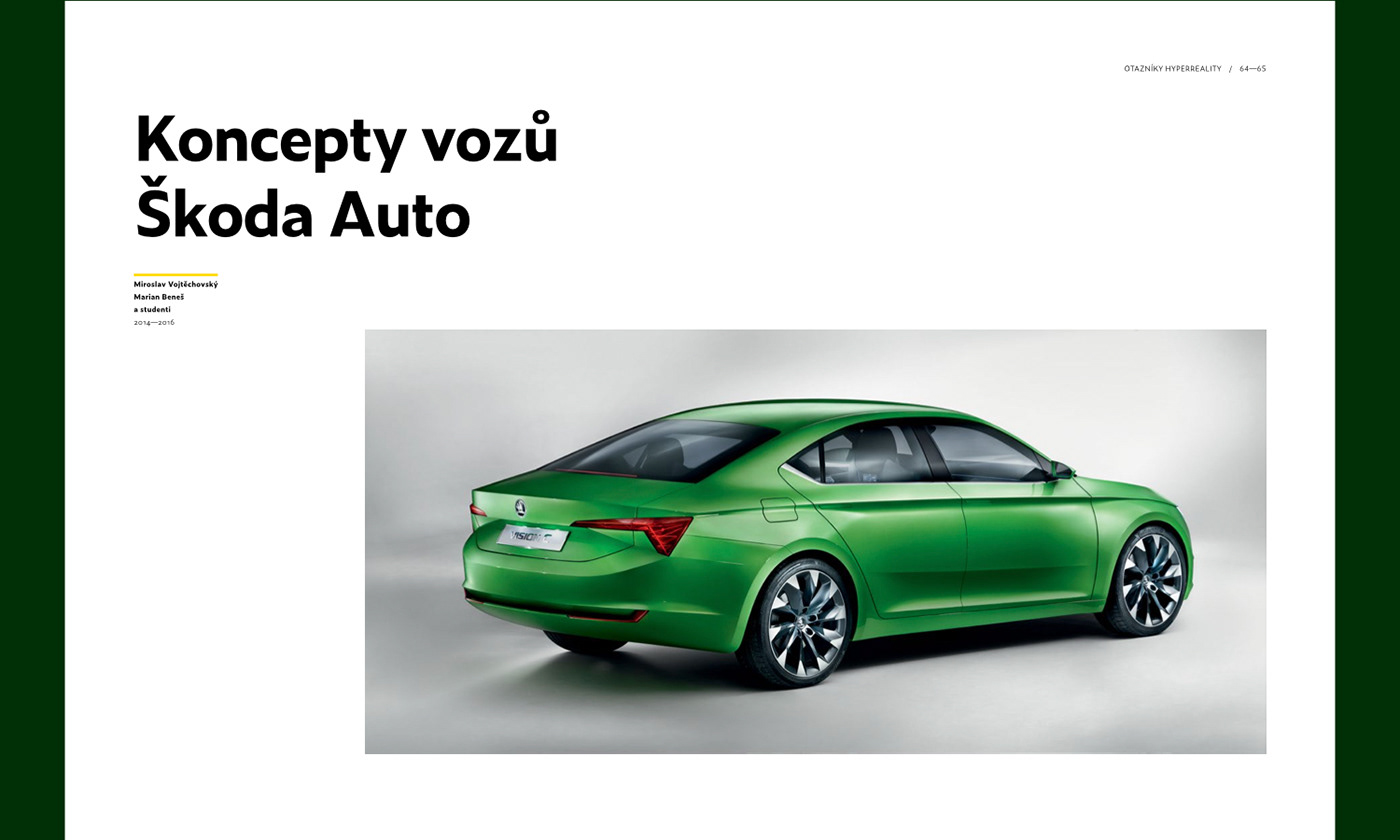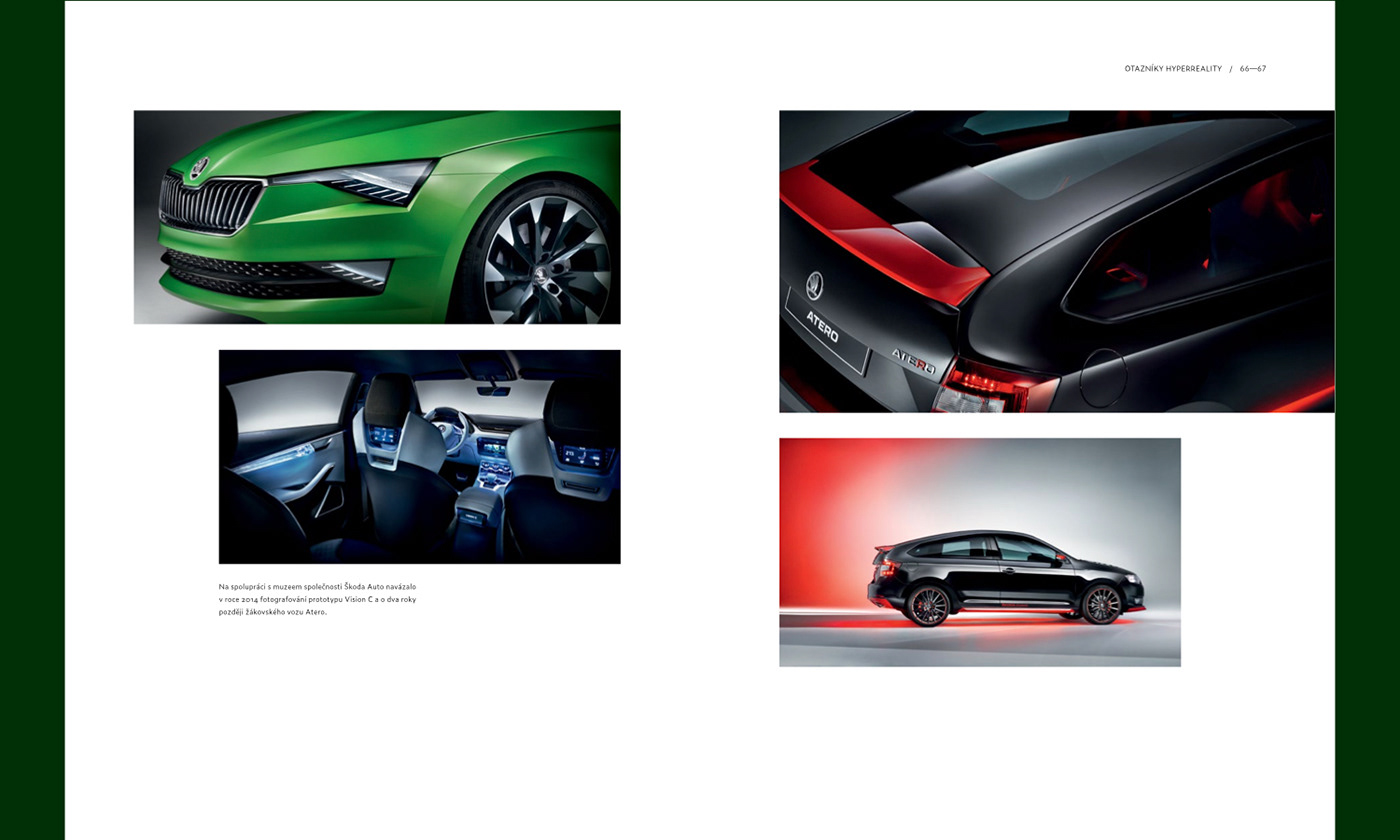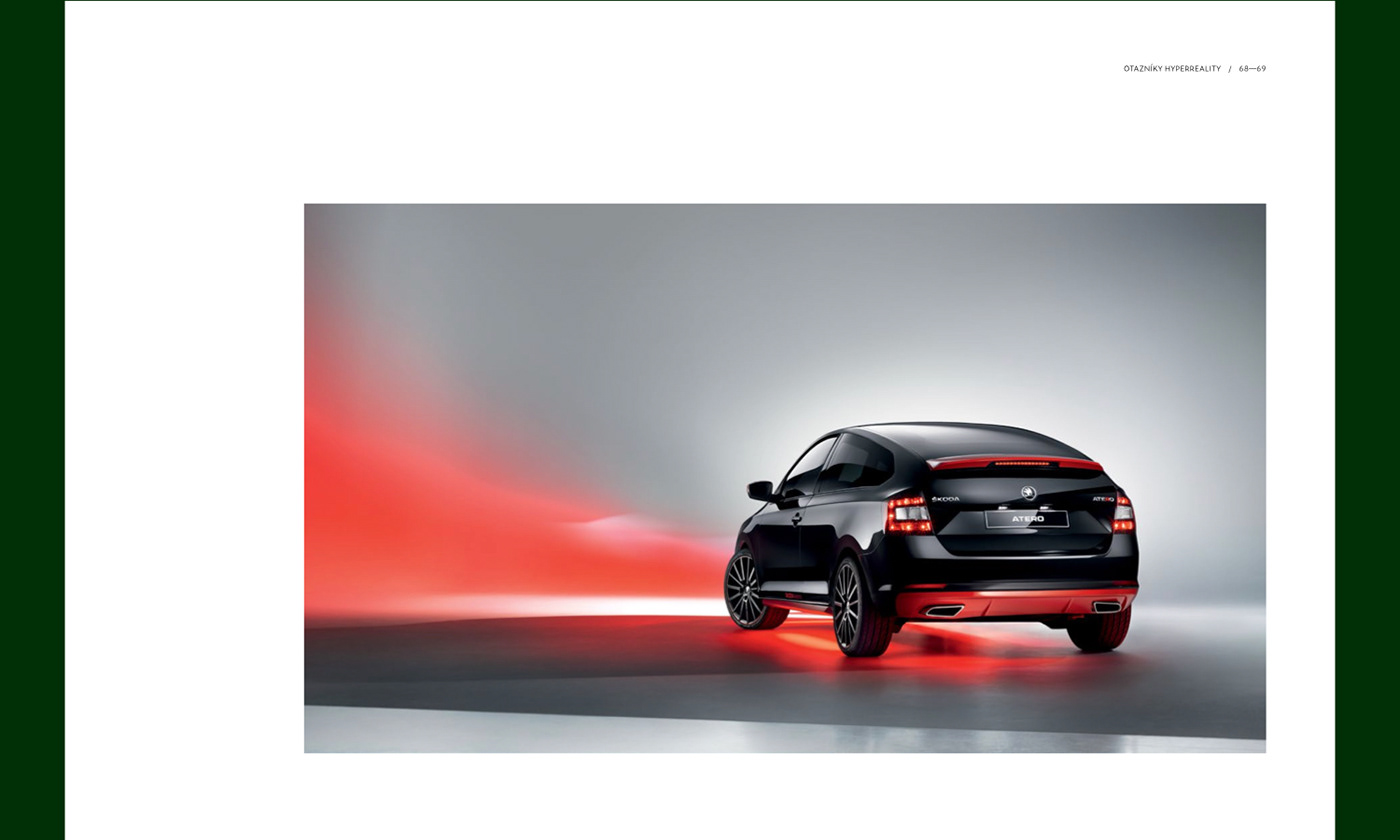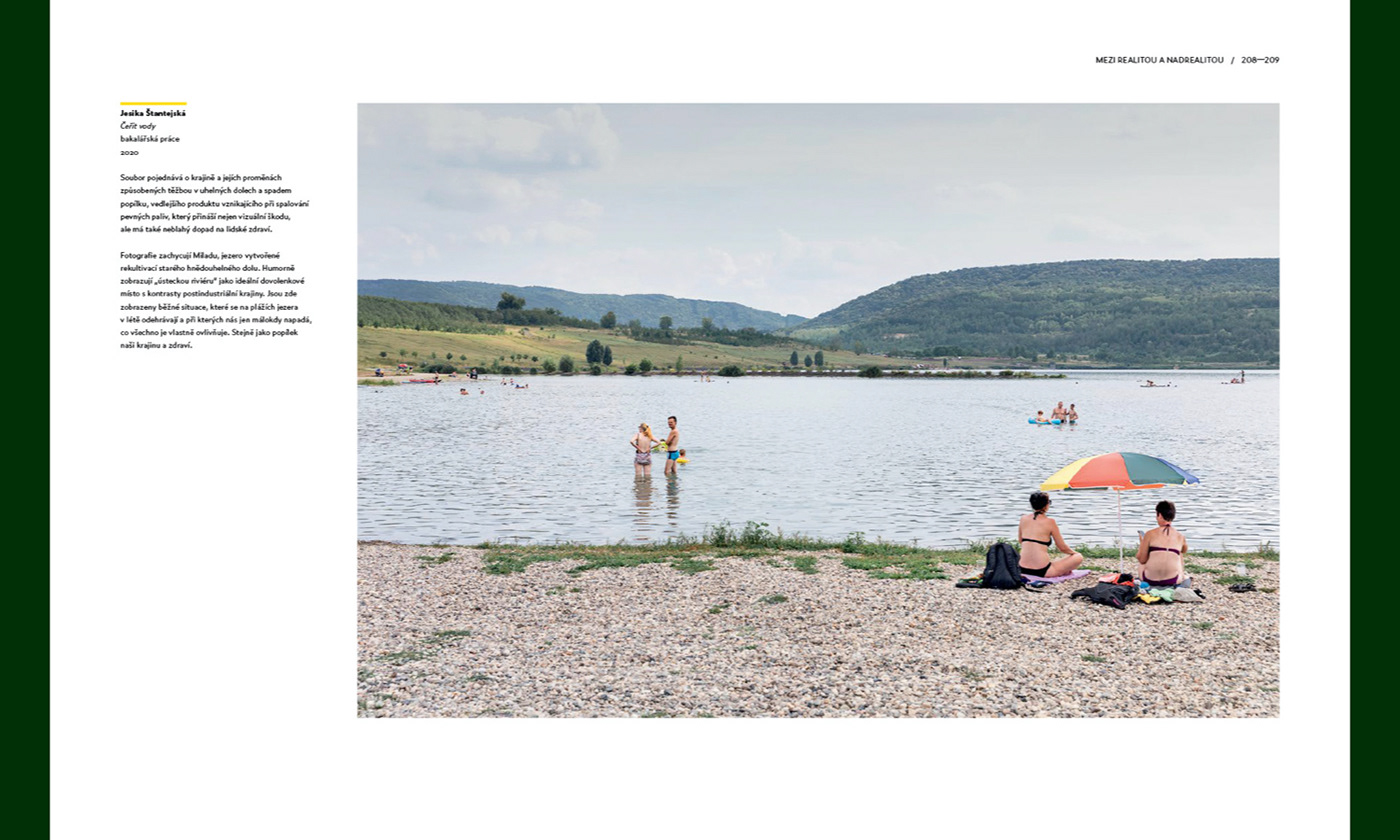
Photography of the New Millennium
From Technical Mutations to the Poetics of Authorial Creation




































At the turn of the millennium, the Vojtěchovský–Beneš tandem was involved in the dynamic transformation of analog photography into a digital process. This book, through creative work and theoretical reflection, examines the influence of new technologies on the tradition of the field and on the emerging generation of young authors who have followed this working couple.
The publication contains, among others, the most complete collection of articles by prof. Miroslav Vojtěchovský dedicated to communication and thinking the image, as well as texts on the scenology of images and work with color in the digital environment by Dr. Marian Beneš.
Through demonstrations of the work of teachers, students and graduates of the studio Applied and Advertising Photography FUD UJEP the book suggests possible ways of development of contemporary visual creation.
Marian Beneš, Ph.D., MQEP, compiled and co-published a publication dedicated to the years 2005–2020 as a thanks and a tribute to the pedagogical and creative work of prof. Miroslav Vojtěchovský, QEP, a leading Czech photographer, pedagogue, theorist and curator, with whom he had the honor of working with for more than 15 years in both ways – pedagogically and professionally.

.

PHOTOGRAPHY OF THE NEW MILLENNIUM
From Technical Mutations to the Poetics of Authorial Creation
Marian Beneš (ed.), Miroslav Vojtěchovský et al.
Format: 24 × 31 cm
Number of pages: 456
Editor-in-Chief: Jakub Konupka
Expert Reviews: doc. MgA. Jaroslav Prokop, doc. Mgr. Václav Podestát
Proofreading: Daniel Kubec
Editorial Editing and Technical Proofreading: Klára Mrkusová
Translation of the English Summary: Lenka Kotrbáčková
Prepress Preparation of Photographs: Marian Beneš
Graphic Design and Typesetting: Jakub Konupka
Printing: Indigoprint, s.r.o.
The book was published in 2021 by Marian Beneš and FUD UJEP
ISBN: 978-80-7561-301-1
Authors of Photographs: Petr Bača, Adéla Bachtíková, Jana Bauerová, Patricie Behenská, Marian Beneš, Jan Berghauer, Lenka Bukačová, Jakub Cabalka, Martina Calajová, Marie Čermáková, Petra Černá Bejdová, Jakub Červenka, Ondřej Červinka, Marta Do Palasová, Helena Dufková, Jiří Dvořák, Martina Gonšenicová, Martin Havlíček, Tomáš Hercog, Martina Houdek, Jan Hřebíček, Lucie Hyšková, Sára Chalupová, Ondřej Janek, Andrea Katonová, Olga Alia Krulišová, Michal Kukačka, Iveta Kulhavá, Tomáš Lumpe, Tamara Malinská, Pavlína Marečková Soukupová, Lenka Molková, Jaroslav Moravec, Jana Pavlišová Mořkovská, Adam Pavlíček, Štěpánka Paseková, Markéta Petříčková, Helena Račková, Yan Renelt, Eva Rodrigues Kubíčková, Anželika Rybak, Jan Slavík, Jesika Štantejská, Marek Štim, Filip Švácha, Radek Timoftej, Filip Trubač, Tereza Valníčková, Tereza Vlasáková, Jakub Vlček, Juliana Vlčková Křížová, Kristýna Voců, Martin "Watch" Vočadlo, Miroslav Vojtěchovský, Adéla Waldhauserová, Lucie Zelená, Kateřina Zelingerová, Vojtěch Zikmunda
Authors of Texts: Petr Bača, Jana Bauerová, Marian Beneš, Marta Do Palasová, Jiří Dvořák, Jan Hřebíček, Lucie Hyšková, Olga Alia Krulišová, Iveta Kulhavá, Eva Rodrigues Kubíčková, Marek Štim, Radek Timoftej, Jakub Vlček, Miroslav Vojtěchovský
The texts in the book are in Czech language.

Dear spectator, dear reader,
Addressing the "spectator" is certainly appropriate for a photographic publication; however, addressing the "reader" is also correct, because we think that theoretical articles and explanations belong inseparably to the conceptual approach to photography. Thank you for the opportunity to introduce such a symbiosis and to convince some of you of its importance throughout reading the book.
If we think about what could be a characteristic feature of our more than fifteen years of cooperation, not only within the studio of Applied and Advertising Photography, then we clearly come to the conclusion that it is not one common denominator, but two lines of motion.
The first is undoubtedly the transition from analogue to digital imaging while maintaining full respect for the classical photochemical process and the tireless search for ways to make the most of digital technology, especially wherever the negative or positive arose only as an intermediate for printing needs.
The second line of our efforts can be called an effort to disrupt the traditional schizophrenia of art schools and the art community in general – breaking the tendency accentuating the discrepancy between the so-called free and commissioned work. We do not intend to number how many famous artefacts of art history were created to order and for a fee, but we want to draw our attention to the teaching process that seeks to develop the student's free creativity, because in all the captivating pedagogical work we establish the coming generation of young authors is becoming deeper and more socially serious wherever they can blend their own authorial free work into the visualization of important life themes of contemporary society.
The publication Photography of the New Millennium: From Technical Mutations to the Poetics of Authorial Creation summarizes one stage of development that photography has gone through – we have focused on the genre of applied creation. The publication also looks for starting points for current approaches whose origins originated at the turn of the 2nd and 3rd millennium. At that time, the processes that work today were firmly established and these will be relevant until they are replaced by creative processes within the framework of creative and technological evolution.
We are thinking in particular of the dynamic activation of digital processes in photography and their spontaneous development in the new millennium – i.e. the beginnings of the recording of light energy not on the film raw material, but on the light-sensitive surface of the image sensor with the subsequent victory of the electrical signal and the binary code. The extensive possibilities of post-production manipulations and also the sudden need for photographers to unconditionally control the strict laws of the world of printing and the related set of rules are closely related to this. In particular, the so-called colour management system, designed for the preparation of digital image data for print and online output.
On the path of the remarkable imaging and editing processes of the dawn of the digital age, we were, in the true sense of the word, pioneers, simply because we were in the right place at the right time. The worldwide discharge of digital imaging technologies at the turn of the millennium found itself at exactly the stage that we, as creators, could not fail to register and immediately used it eagerly. To meet good fortune half way, we had to be prepared, which may have seemed not much difficult due to our professional practice. However, this does not mean that there was nothing to learn. We had to learn everything new, evolving at the speed of the big bang. We met the current possibilities with the enthusiasm of an astonished child. We immediately shared the newly acquired procedures with our students, who were around from the beginning, and then we methodologically incorporated this "universe of the new image" into the curriculum. Vibrant events, related contexts, historical contexts and circumstances of our work, whether directed by teachers or students, are the subject of published textual analyses, naturally richly accompanied by a photographic image.
What remains unchanged in the current trend is the need for quality content. Part of the book is a chronologically arranged selection of collected captivating educational texts by prof. Miroslav Vojtěchovský, which relate to the theory of visual communication through historical contexts and philosophical reflection. Some of the articles follow each other freely thematically, others do not, but all of them are an engaging excursion into the world of fine arts, with a focus on the medium of photography. Over the course of a quarter of a century, the texts became part of professional publications. In this work we have used mainly the original author's manuscripts which have undergone editorial changes. This is the first comprehensive collection of written records of this doyen of Czech photography and university art education.
Time will not wait and the important thing is how the emerging productive generation addresses the creative challenges. An integral part of the book are examples from our point of view of the most beneficial works of young authors, graduates of the studio Applied and Advertising Photography. However, because the importance of theoretical considerations also applies here, this level cannot be overlooked in the publication. The texts prove that every pictorial work is primarily a set of thought considerations, to which the author seeks answers through the media of visual communication. Current, professional-creative movements are theoretically presented by the articles of other young talents, graduates of the studio. All of them and many others who look at the issue of communication through visual creation with a slightly younger, fresher, and therefore more up-to-date view are followers of generations of a message full of faith that expression through not only photography but all means of visual communication should be cultivated, socially useful and should be based on creative beliefs.
It is therefore not surprising that the debates we have with students or colleagues do not only concern the professional mastery of the compositional and expressive means of static and dynamic images, but the ability of pure creation, which is based on a distinctive, thoughtful and systematic approach and unique features. It is a talent to interpret an unmistakable, i.e. authentic story through photography. We are talking about mastering the original creative implementation procedures, as well as the need for high artistic sophistication and technical quality of image outputs. These can be the guarantee of authorial work, which has a chance to separate very quickly from the less beneficial, respectively not at all interesting mass production of "clicking" experiments. But creation is also about respect and discipline. About respect for traditional values and the profession we have chosen. The validity of these debates is obvious and it does not matter if they are held at the UJEP Faculty of Art and Design in Ústí nad Labem or the University of Creative Communication in Prague. We are sure that similar discussions are taking place in other academic workplaces or in individual art associations, in our case the Association of Professional Photographers of the Czech Republic.
What should we, visual communication educators, do to maintain the high quality of the work of young talented authors? Our task should be to lead students to independence and individuality. If their works of art also include a story with an unmistakable author's contribution, there is a high probability that the market will register such a work.
Certainly we could not manage to capture all the sources and influences the environment of photography has had on us over the last more than fifteen years and which we have involved in our own professional activities, and especially in the life of the studio – resp. studios, because there are more workplaces where we have left or are leaving a trail. However, if you, dear spectators, dear readers, hopefully both in one, are inspired, pleased, entertained, enriched with information, but mainly encouraged in your own work; we will not consider our work as unnecessary and useless.
Marian Beneš
Book editor

The author of the book won the BEST PUBLISHER 2022 award,
one of the highest appreciation in the prestigious FEP – European Photo Book Award competition.

